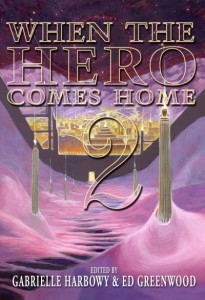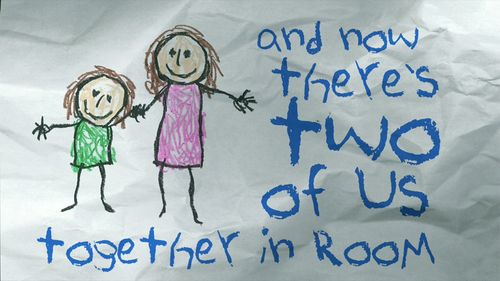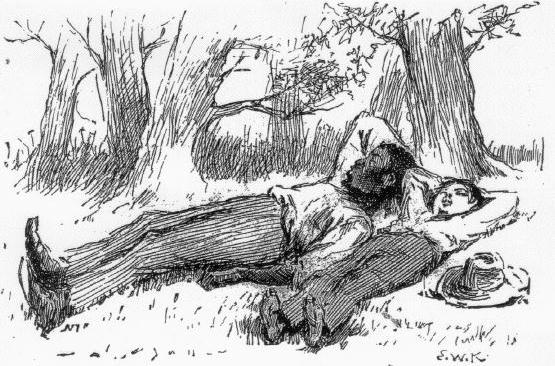I like to write tight third person point of view. Briefly, that means that the story is seen “through the eyes” of one or more characters. The descriptions of events, the value placed on those events, the decision making process, and the interpretation of actions and gestures is all coloured by that particular person’s experience. Readers see how this character thinks and analyzes.
One of the most fun things to do with tight third person is to drop hints in the narrative that the point of view character might be misinterpreting events, misunderstanding other characters, selectively perceiving some factors while overlooking others, or missing some of what’s going on. Different people can experience the same event in very different ways depending on their histories, values and beliefs. Writing in tight third person challenges readers to question the point of view character’s interpretation.
What character the writer chooses to “hold the camera” can change the entire story.
Two examples stand out to me. The first is when editorial feedback convinced me to change the point of view character; the second is when I chose not to, despite my beta reader’s advice.
 Later this year I have a short horror story called “Red Ochre” appearing in Fossil Lake 2: The Refossiling. In the initial draft, the story was told from the point of view of a white male student named Perry. As the story went on, clues in the narrative indicated that Perry’s fascination with, and actions toward, his friend Meesha were twisted and dangerous, even though Perry’s narration showed that he considered his behaviour to be normal and unremarkable. I liked the idea that readers, like Meesha, might be taken in by Perry’s charm at the beginning of the story. The scare factor was to come in when readers realized that Perry had deceived them as well as her.
Later this year I have a short horror story called “Red Ochre” appearing in Fossil Lake 2: The Refossiling. In the initial draft, the story was told from the point of view of a white male student named Perry. As the story went on, clues in the narrative indicated that Perry’s fascination with, and actions toward, his friend Meesha were twisted and dangerous, even though Perry’s narration showed that he considered his behaviour to be normal and unremarkable. I liked the idea that readers, like Meesha, might be taken in by Perry’s charm at the beginning of the story. The scare factor was to come in when readers realized that Perry had deceived them as well as her.
I gave the story to a beta reader, and he told me that in his opinion, the story was a failure.
Initially, I thought he’d missed the “creepy” cues given by Perry throughout the narrative. No, he said. His problem was that Meesha, a Native American student, appeared as an enigmatic, romanticized object of infatuation rather than as a person in her own right.
That wasn’t what I’d wanted the story to do at all. I tried to rewrite it, but given that Perry didn’t really know much about Meesha as a person, nor did he care to know, I couldn’t fix that problem while telling the story from Perry’s point of view.
I scrapped that draft and started again from the top, using Meesha as the point of view character.
Perry’s object of fascination became a fully developed human being, with her own reasons for disregarding the “creepy” cues Perry gives off as the story progresses. Better yet, I realized that the stakes were higher for Meesha, and the story would be more intense because of it. Perry has only his life to lose. Meesha has her trust in her friend, her understanding of the world around her, and ultimately something even greater than her life on the line: she is risking both her identity and her soul.
Changing the point of view character made “Red Ochre” a much stronger and ultimately more unsettling horror story, and I’m very pleased with the results.
 The other example is from the first story I ever sold: “Blood Runs Thicker” in the e-book edition of When the Hero Comes Home 2.
The other example is from the first story I ever sold: “Blood Runs Thicker” in the e-book edition of When the Hero Comes Home 2.
In this story, a woman becomes a reluctant war hero. When her childhood best friend attends her homecoming, he realizes that she has been maneuvered into playing this role, even though she did what she did for her own reasons, and without succeeding at her intended goals.
My beta reader for my first draft told me that she didn’t think that the stakes in the story were high enough, and perhaps I should reconsider telling the story from the hero’s point of view, instead of from her friend’s. After all, she was the one forced into this situation against her will.
I began re-drafting and two thousand words in, I realized it would never work–but more importantly, why not. The core of the story was not about war. The core of the story was about how much a person would sacrifice for a loved one. The focus of my narrative was not the hero’s actions in combat, but that her friend was willing to sacrifice the future he’d planned for himself in order to protect her. He was the active character, and he was the one with something left to lose: she had already lost everything that mattered to her.
I re-wrote the initial story, emphasizing how much the point of view character stood to lose if he acted to protect the war hero. I focused the narrative on the point of view character’s internal conflict, emotions, and doubts. During my rewrite, I kept foremost in mind that the core of the story was about sacrifice.
The story sold. You can check it out for yourself here.
In this case, trying to tell the story from someone else’s point of view helped me understand the theme of the story. I used this knowledge to give the story a tight focus on the crucial concepts and tell a better tale.
If your story’s not working, consider how the plot might look from another character’s point of view. The lenses through which each character filters the events can make all the difference.


 Room. He has never been outside. He hasn’t received any sort of education, apart from the one his mother tries to give him, which makes his sentence construction short and plain. He only describes what he sees, not knowing exactly what certain things mean. But you, the reader, know exactly what it means. And it makes your stomach churn and your heart ache.
Room. He has never been outside. He hasn’t received any sort of education, apart from the one his mother tries to give him, which makes his sentence construction short and plain. He only describes what he sees, not knowing exactly what certain things mean. But you, the reader, know exactly what it means. And it makes your stomach churn and your heart ache. causing havoc. What Twain did so brilliantly was deciding to tell the story from Huck’s perspective, showing us the charm and charisma Huck has to offer, so we can’t help but love the little shit. Using stylistic voicing, Twain made us relate to an otherwise potentially annoying character.
causing havoc. What Twain did so brilliantly was deciding to tell the story from Huck’s perspective, showing us the charm and charisma Huck has to offer, so we can’t help but love the little shit. Using stylistic voicing, Twain made us relate to an otherwise potentially annoying character.
